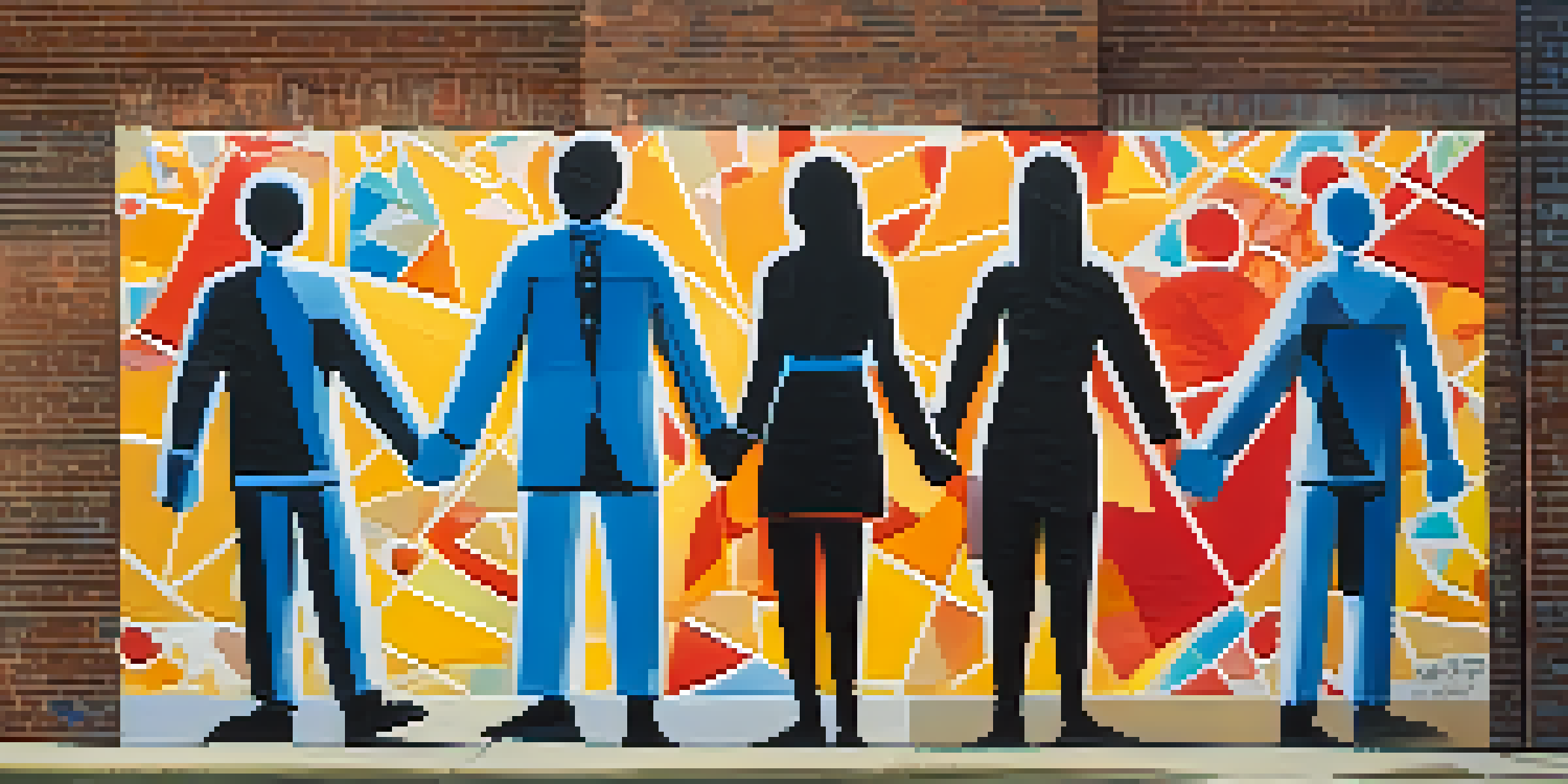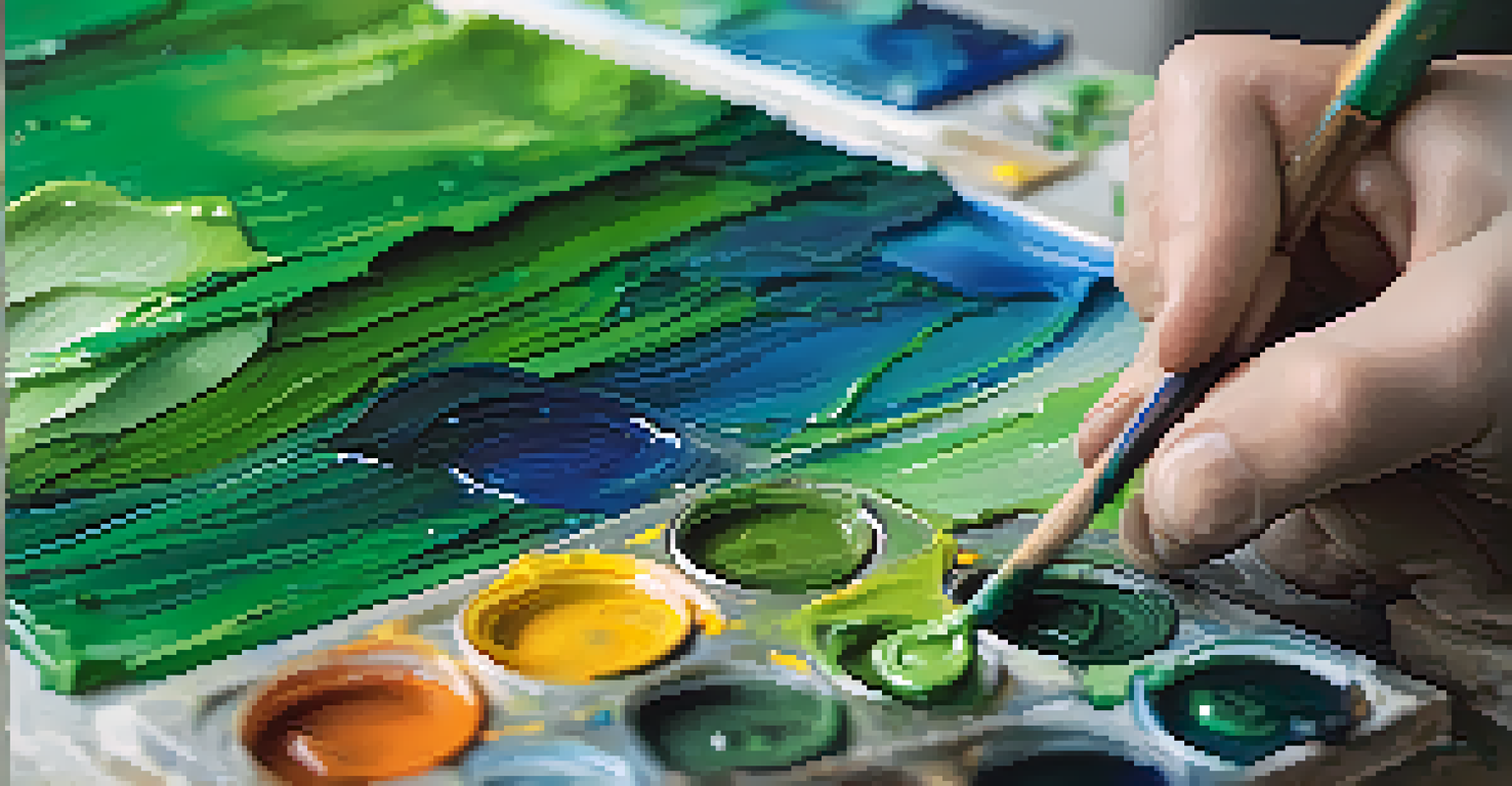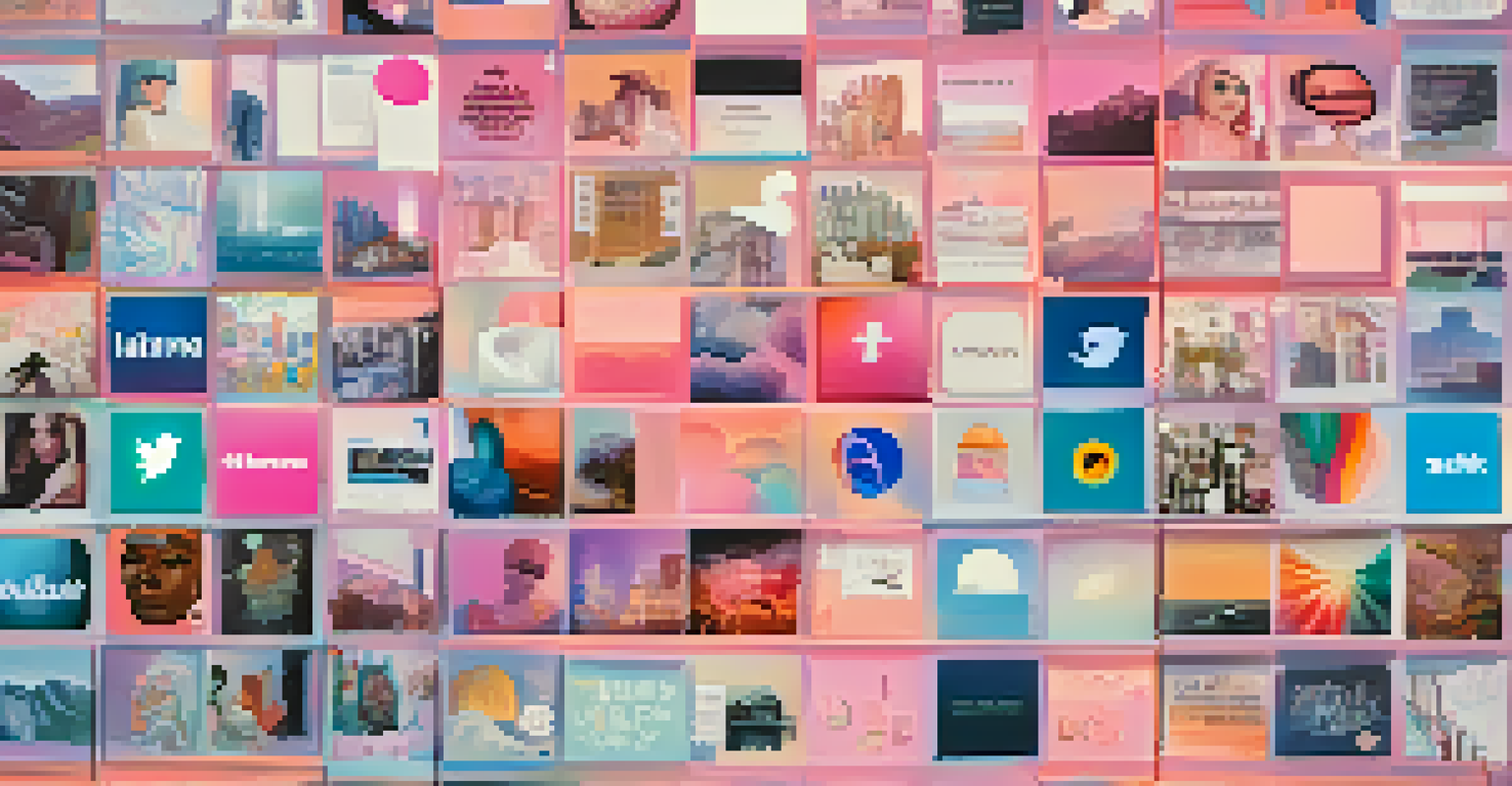The Intersection of Art and Activism on Social Media

Understanding Art as a Medium for Activism
Art has long been a powerful tool for activism, allowing artists to express social and political messages in compelling ways. From protest songs to powerful murals, art captures the essence of movements and resonates with audiences on emotional levels. This creative form of communication can distill complex issues into relatable visuals or narratives, making it easier for people to connect and engage with the cause.
Art is not a mirror to reflect the world, but a hammer with which to shape it.
In today’s digital age, social media acts as a catalyst, amplifying these artistic expressions to a global audience. Platforms like Instagram, TikTok, and Twitter enable artists to share their work instantly, reaching millions who might not encounter these messages otherwise. This democratization of art allows for diverse voices to join the conversation, making activism more inclusive and representative.
Moreover, the visual nature of social media enhances the impact of art in activism. An evocative image or a powerful video can go viral, sparking conversations and inspiring action far beyond the artist's immediate community. This intersection of art and activism on social media transforms how movements are perceived and supported.
Case Studies: Successful Art Activism Campaigns
One notable example of art and activism intertwining on social media is the 'Black Lives Matter' movement. Artists from various backgrounds created powerful graphics, illustrations, and videos that conveyed messages of justice and equality, which spread rapidly across platforms. These works not only raised awareness but also provided a sense of unity among supporters, showcasing the collective strength of the movement.

Another inspiring case is the 'Climate Strike' movement, where artists used social media to share captivating visuals and infographics about climate change. These posts often included eye-catching artwork that made complex data more digestible, motivating audiences to take action. The combination of striking visuals and urgent messaging helped galvanize a younger generation committed to environmental advocacy.
Art Amplifies Activism Online
Digital platforms allow artists to share their work widely, making activism more inclusive and accessible.
These campaigns illustrate how art can effectively communicate the urgency of social issues. By harnessing the power of social media, artists can capture the public's attention, make compelling arguments, and inspire collective action toward meaningful change.
The Role of Digital Platforms in Amplifying Voices
Digital platforms have revolutionized how art can be shared and experienced. Unlike traditional galleries, social media provides a low-barrier entry point for artists, allowing them to showcase their work without needing institutional backing. This accessibility empowers a diverse range of creators, including those from marginalized communities, to share their perspectives and insights.
The role of the artist is to make the revolution irresistible.
Additionally, algorithms on platforms like Instagram and TikTok can help amplify content that resonates with audiences, often prioritizing emotional engagement over traditional metrics. As a result, art that speaks to social issues can gain traction and reach individuals who may not actively seek out activism. This organic spread of ideas fosters a vibrant community of artists and activists working in tandem.
As these platforms continue to evolve, they offer new opportunities for collaboration and creativity. Artists can engage with audiences directly, fostering a sense of community and shared purpose that transcends geographical boundaries. This interconnectedness enhances the impact of art as a tool for change.
Challenges Faced by Artist Activists Online
Despite the numerous opportunities, artists engaged in activism on social media face unique challenges. One significant hurdle is the risk of censorship, as platforms may remove or limit access to content deemed controversial or inappropriate. This can stifle critical conversations and diminish the reach of important messages, making it essential for artists to navigate these platforms carefully.
Additionally, the fast-paced nature of social media can lead to burnout among artists. The constant demand for fresh content and the pressure to engage with followers can detract from the creative process and the original purpose of their work. Finding a balance between activism and self-care becomes crucial, as artists must ensure they remain passionate and effective advocates.
Social Media Transforms Engagement
The visual nature of social media enhances the impact of art in activism, enabling messages to go viral and inspire action.
Moreover, the commercialization of social media can dilute the authenticity of artistic expressions. As artists strive for visibility, they may inadvertently shift their focus toward what's popular rather than what resonates with their values. This tension between authenticity and visibility requires careful navigation to maintain the integrity of their messages.
The Future of Art and Activism on Social Media
Looking ahead, the intersection of art and activism on social media is poised to evolve further. As new technologies emerge, such as virtual and augmented reality, artists will have innovative tools to engage audiences in immersive experiences. This could create deeper emotional connections and provide new ways for people to interact with social issues.
Moreover, the rise of decentralized platforms may offer alternative spaces for artistic expression, reducing the risk of censorship and commercialization. These platforms can empower artists to take control of their narratives and reach audiences directly, fostering a more authentic exchange of ideas. This shift could lead to a more diverse and inclusive art landscape.
Ultimately, the future of art and activism on social media will depend on the continued collaboration between artists, activists, and audiences. By working together, they can harness the power of creativity to inspire change and address pressing social issues in meaningful ways.
How Individuals Can Support Art Activism
Supporting art activism doesn't always require grand gestures; even small actions can make a significant impact. Individuals can start by following artists and activists on social media, sharing their work, and amplifying their messages. By giving visibility to these creators, you help spread their important narratives and encourage others to engage with the causes they represent.
Additionally, consider participating in local art events or exhibitions that focus on social issues. These gatherings often provide opportunities to connect with artists directly and learn more about their work and motivations. Engaging with art in person can deepen your understanding and appreciation of the role it plays in activism.
Challenges for Artist Activists
Artists face hurdles like censorship and burnout, making it essential to balance activism with self-care and authenticity.
Finally, consider contributing to crowdfunding campaigns or purchasing art from activist artists. Supporting their work financially allows them to continue their creative endeavors and further their impact on social issues. Every contribution counts, and it helps ensure that art remains a vital part of the conversation around activism.
Conclusion: The Lasting Impact of Art in Social Movements
In conclusion, the intersection of art and activism on social media has transformed how we engage with social issues. Through powerful visuals, compelling narratives, and innovative use of digital platforms, artists have created a dynamic space for activism to thrive. This synergy enables movements to resonate deeply with audiences, fostering empathy and understanding.
As we continue to navigate an ever-changing digital landscape, it’s essential to recognize the value of art as a vehicle for change. By supporting artists and their work, we can contribute to a broader dialogue that challenges the status quo and advocates for justice and equality. Art has the power to inspire, mobilize, and unite us in our shared pursuit of a better world.

Ultimately, the journey of art in activism is ongoing. As artists and activists continue to push boundaries and explore new mediums, the potential for meaningful change remains limitless. Together, we can harness the power of creativity to create a more just and equitable society.